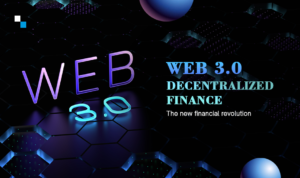In recent years, the concept of the decentralized web has gained significant traction, challenging the dominance of conventional centralized frameworks. This worldview move is driven by the development of peer-to-peer (P2P) systems that offer a heap of focal points over their centralized partners. This article dives into the transformative control of the decentralized web and how P2P systems are disturbing conventional frameworks over different domains.
Introduction to the Decentralized Web
The decentralized web alludes to a arrange design where information and control are disseminated over numerous hubs or maybe than being concentrated in a central substance. Not at all like centralized frameworks, which depend on a single point of control, decentralized systems work through agreement instruments, improving flexibility and transparency.
Defining Decentralized Networks
Decentralized systems use blockchain innovation, a disseminated record framework that records exchanges over numerous hubs. This dispenses with the require for middle people and upgrades information integrity.
Evolution from Centralized to Decentralized Systems
The move towards decentralization is driven by concerns over information protection, security breaches, and monopolistic control in centralized frameworks. Decentralized models offer more prominent strength against cyber assaults and advance client empowerment.
Evolution from Centralized to Decentralized Systems
The move towards decentralization is driven by concerns over information protection, security breaches, and monopolistic control in centralized frameworks. Decentralized models offer more prominent strength against cyber assaults and advance client empowerment.
Benefits of Decentralization
Increased Security and Privacy
Decentralized frameworks diminish the hazard of information breaches and unauthorized get to since there is no single point of disappointment. Clients have more noteworthy control over their information and can take an interest in straightforward transactions.
Lower Costs and Improved Scalability
By killing middle people, decentralized systems decrease exchange expenses and operational costs. They moreover empower consistent adaptability, pleasing a developing client base without compromising performance.
Greater Independence and Control for Users
Decentralized stages enable clients by giving them possession of their advanced resources. They can associated specifically with peers, bypassing conventional guardians and administrative hurdles.
Peer-to-Peer Systems Explained
What are P2P Networks?
Peer-to-peer systems permit clients to share assets straightforwardly without depending on central servers. Each hub in the organize acts both as a client and a server, encouraging decentralized communication and information exchange.
How Do They Work Without Central Authorities?
P2P systems utilize conveyed conventions such as BitTorrent and IPFS to empower record sharing, substance conveyance, and collaborative computing. They accomplish agreement through cryptographic calculations, guaranteeing information astuteness and reliability.
Disruption of Conventional Systems
Decentralized web advances are disturbing a few key divisions, counting fund, record sharing, and communication.
Finance and Blockchain Technology
Blockchain-based cryptocurrencies like Bitcoin and Ethereum have revolutionized the budgetary scene, advertising secure, peer-to-peer exchanges without intermediaries.
File Sharing and Substance Distribution
Platforms like IPFS and BitTorrent empower decentralized record capacity and sharing, lessening dependence on centralized servers and relieving censorship risks.
Communication and Social Networking
Decentralized communication conventions like Lattice and Diaspora give elective stages for secure informing and social organizing, protecting client security and opportunity of expression.
Challenges and Limitations
Despite their potential, decentralized frameworks confront challenges that ruin far reaching adoption.
Scalability Issues
Scaling decentralized systems to suit huge client bases without compromising execution remains a specialized challenge that requires imaginative solutions.
Regulatory Concerns
Regulatory systems frequently slack behind mechanical progressions, making vulnerability for decentralized ventures and constraining their development potential.
Adoption Barriers
Educating clients and businesses around the benefits and functionalities of decentralized frameworks is significant for overcoming selection boundaries and cultivating standard acceptance.
Future Viewpoint and Potential Impact
The decentralized web is balanced for exponential development, driven by progressions in blockchain innovation and expanding request for decentralized applications (DApps).
Growth of Decentralized Applications (DApps)
DApps are program programs that run on decentralized systems, advertising a wide extend of functionalities such as money related administrations, gaming, and social networking.
Implications for Different Industries
Decentralized innovations have the potential to change businesses such as fund, healthcare, supply chain administration, and administration, making unused openings for advancement and disruption.
Conclusion
The rise of the decentralized web and peer-to-peer systems means a worldview move towards more flexible, straightforward, and user-centric frameworks. Whereas challenges exist, the potential benefits of decentralization distant exceed the downsides, clearing the way for a decentralized future where people have more prominent control over their computerized lives.
Unique FAQs
- What are some examples of decentralized applications (DApps)?
- DApps include decentralized finance (DeFi) platforms, blockchain-based games, and social media networks built on decentralized protocols.
- How does decentralization enhance data security?
- Decentralized networks distribute data across multiple nodes, reducing the risk of single points of failure and unauthorized access.
- Are there any regulatory challenges associated with decentralized systems?
- Yes, regulatory frameworks for decentralized technologies are still evolving, creating uncertainty for businesses and investors.
- What role do smart contracts play in decentralized applications?
- Smart contracts are self-executing contracts coded on blockchain networks, enabling automated and tamper-proof transactions.
- How can businesses leverage decentralized technologies for competitive advantage?
- By adopting decentralized systems, businesses can streamline operations, enhance security, and tap into new markets and revenue streams.






Be First to Comment